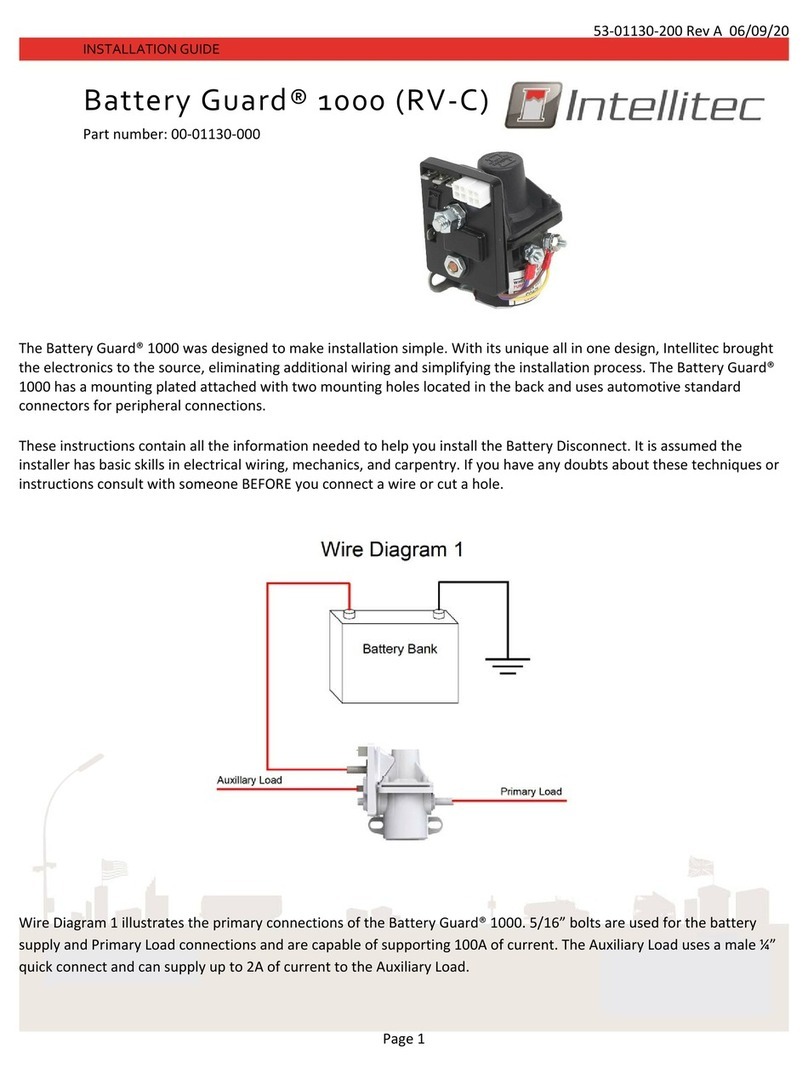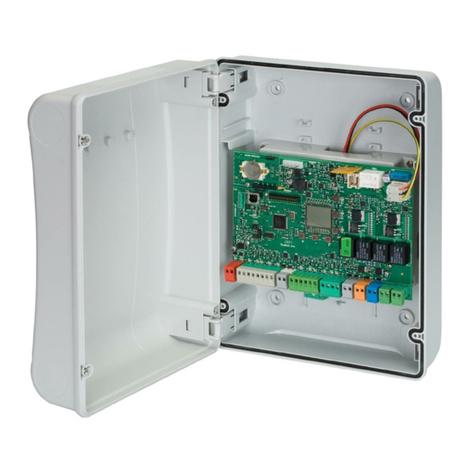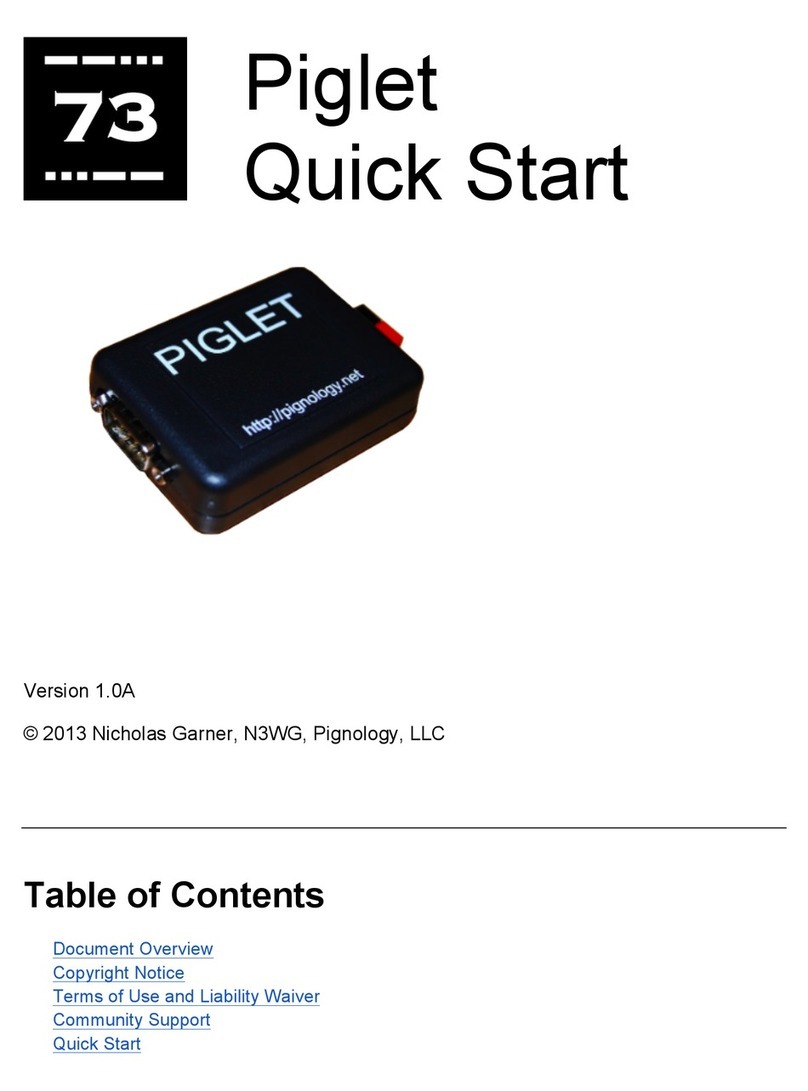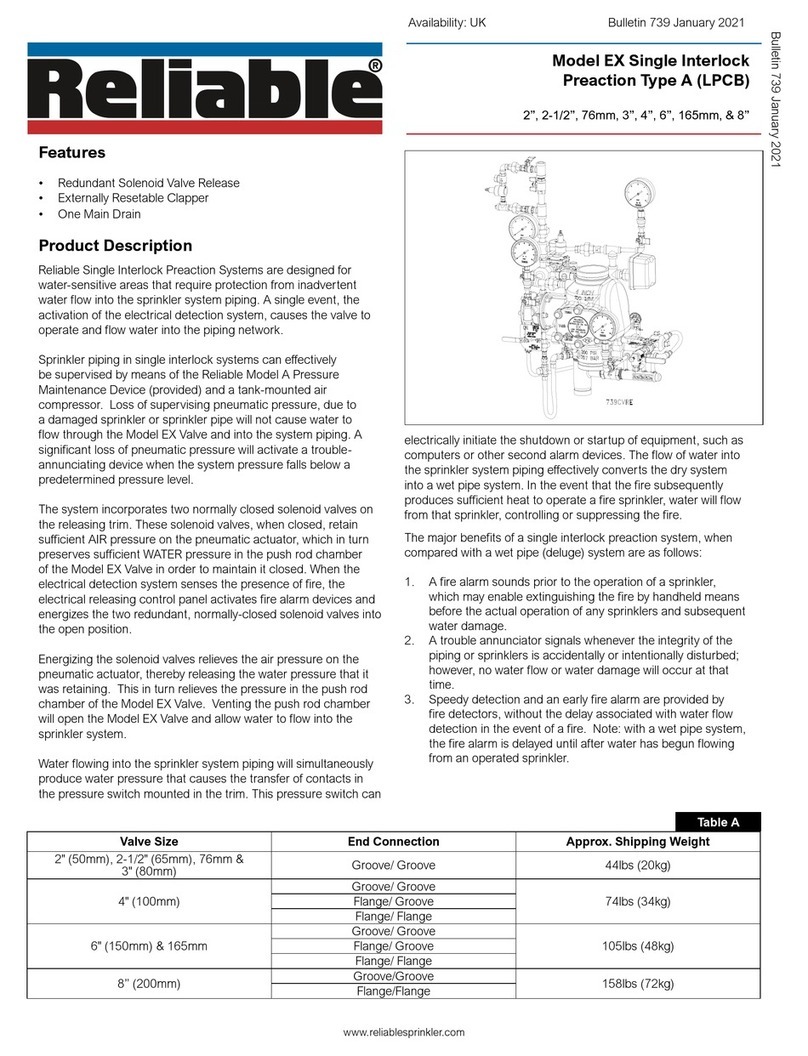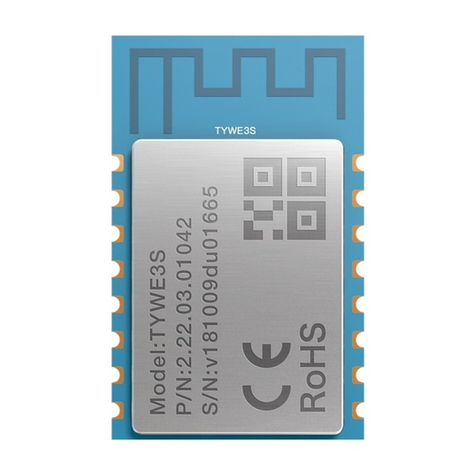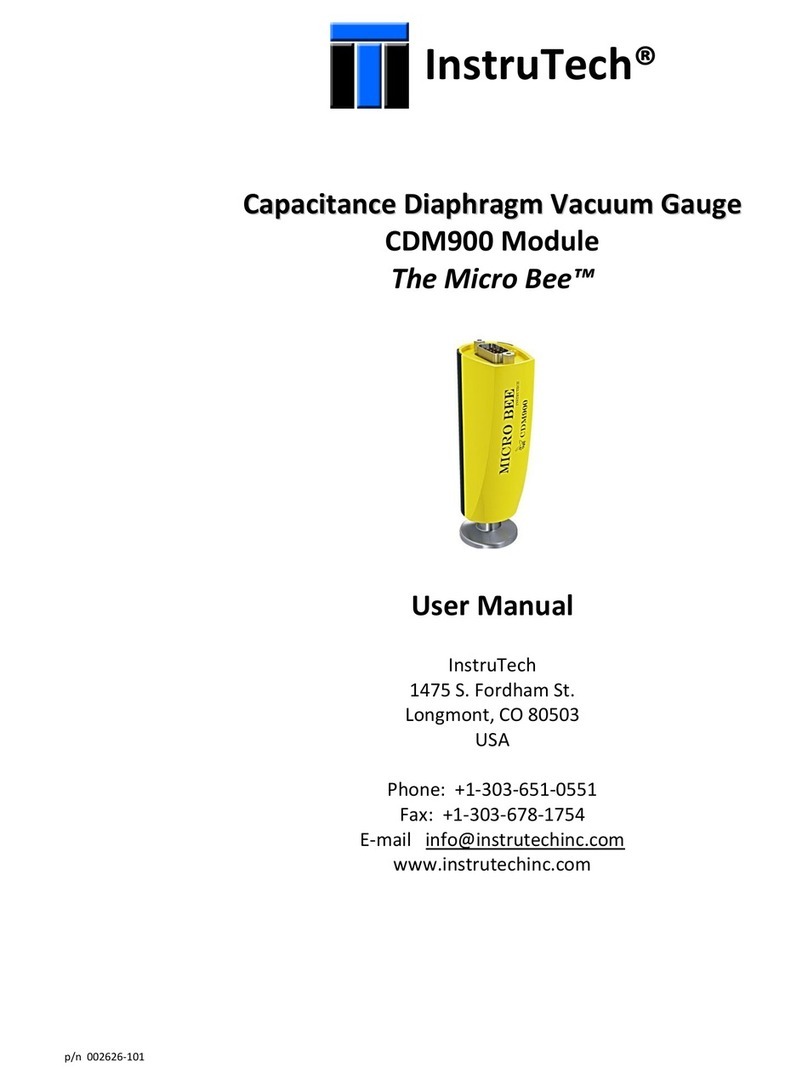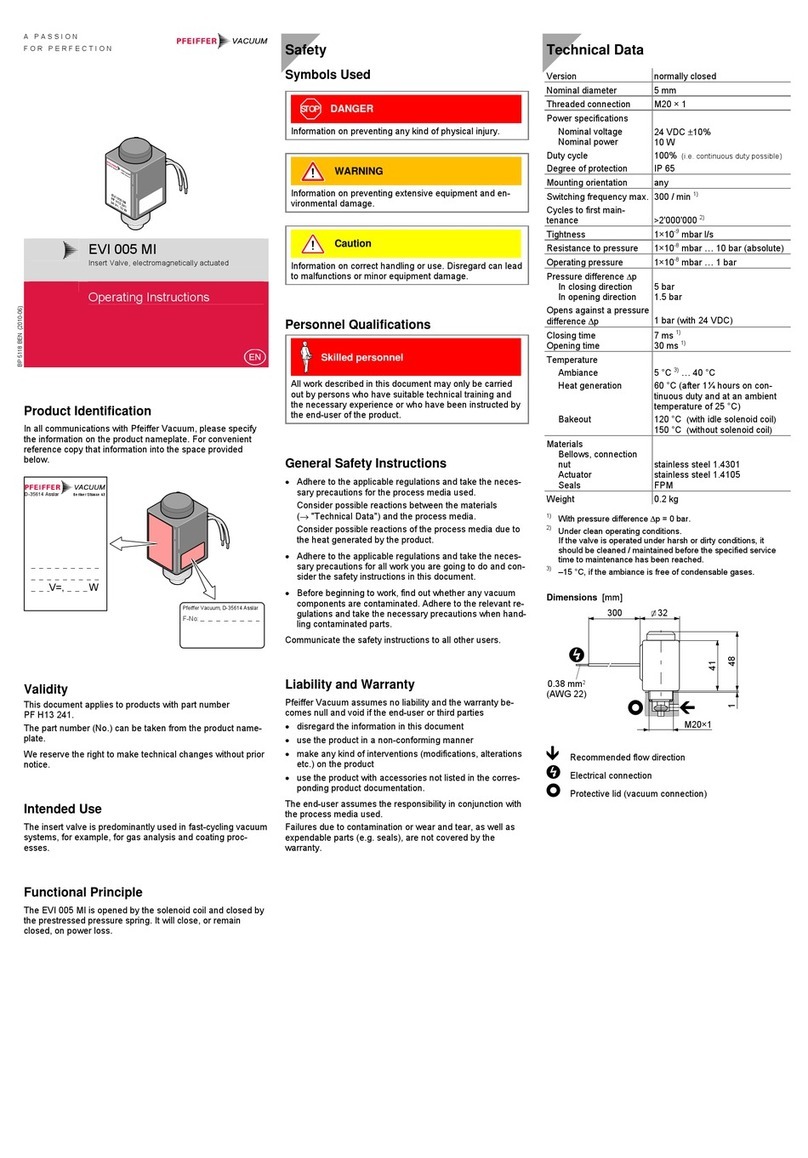AUMA AMExB 01.1 User manual

Certificate Registration No.
12 1
00/
1
0
442
69
Actuator controls
Short instructions bus connection
AUMA MATIC
AM 01.1/AM 02.1
AMExB 01.1/AMExC 01.1
Modbus

2
Actuator controls AUMA MATIC AM/AMExB/AMExC
Modbus Short instructions
Scope of these instructions: These instructions are valid for multi-turn actuators of type ranges
SA(R) 07.1 – SA(R) 16.1 and SA(R)ExC 07.1 – SA(R)ExC 16.1 and for
part-turn actuators of type ranges SG(R) 05.1 – SG(R) 12.1 and SGExC
05.1 – SGExC 12.1 with the controls AUMA MATIC AM 01.1/AM 02.1
or AMExB 01.1 and AMExC 01.1 and Modbus interface.
Table of contents
1. Safety instructions 3
1.1 Range of application 3
1.2 Commissioning (electrical connection) 3
1.3 Maintenance 3
1.4 Warnings and notes 3
2. Short description 3
3. Electrical connection 4
3.1 Power supply (standard) 4
3.2 Bus connection (standard) 5
3.3 Fitting the cover 6
3.4 Remote position transmitter 7
3.5 AUMA MATIC on wall bracket 7
3.6 Test run 7
3.7 Mains and bus connection for Ex-version with plug/socket connector/terminal board (KP) 8
3.8 Mains and bus connection for Ex-version with plug-in terminal connection (KES) 10
3.9 Redundant bus connection 11
3.10 Bus cables 12
3.11 Setting the Modbus interface 13
3.12 Setting the communication parameters 14
3.13 Setting parameter seating mode in end position CLOSED, parity bits and number of stop bits 14
3.14 Setting the Modbus address 14
3.15 Setting the baud rate 15
4. Description Modbus interface 16
4.1 Indication during system start-up: 16
4.1.1 Indications of operation LEDs 7 to 0 16
4.1.2 System displays LEDs L1 to L4 17
4.2 Checking/setting the switches on the logic board 18
5. Appendix A Literature references 19
6. Appendix B Connecting the cable shield for AUMA MATIC AMExB/AMExC 01.1 19
Index 19
Addresses of AUMA offices and representatives 20

1. Safety instructions
1.1 Range of application AUMA actuators are designed for the operation of industrial valves,
e.g. globe valves, gate valves, butterfly valves and ball valves.
For other applications, please consult us. The manufacturer is not liable for
any possible damage resulting from use in other than the designated appli-
cations. Such risk lies entirely with the user.
Observance of these operation instructions is considered as part of the
controls’ designated use.
1.2 Commissioning
(electrical connection) During electrical operation, certain parts inevitably carry lethal voltages.
Work on the electrical system or equipment must only be carried out by a
skilled electrician himself or by specially instructed personnel under the
control and supervision of such an electrician and in accordance with the
applicable electrical engineering rules.
1.3 Maintenance The maintenance instructions must be strictly observed, otherwise a safe
operation of the multi-turn actuator/the controls is no longer guaranteed.
1.4 Warnings and notes Non-observance of the warnings and notes may lead to serious injuries or
damage. Qualified personnel must be thoroughly familiar with all warnings
and notes in these operation instructions.
Correct transport, proper storage, mounting and installation, as well as
careful commissioning are essential to ensure a trouble-free and safe
operation.
The following references draw special attention to safety-relevant proce-
dures in these operation instructions. Each is marked by the appropriate
pictograph.
This pictograph means: Note!
“Note” marks activities or procedures which have major influence on the
correct operation. Non-observance of these notes may lead to consequen-
tial damage.
This pictograph means: Electrostatically endangered parts!
The printed circuit boards are equipped with parts which may be damaged
or destroyed by electrostatic discharges. If the boards need to be touched
during setting, measurement, or for exchange, it must be assured that
immediately before a discharge through contact with an earthed metallic
surface (e.g. the housing) has taken place.
This pictograph means: Warning!
“Warning” marks activities or procedures which, if not carried out correctly,
can affect the safety of persons or material.
2. Short description AUMA actuators have a modular design. Motor and gearing are mounted in
a common housing.
The actuators are driven by an electric motor and controlled with the elec-
tronic controls AUMA MATIC Modbus. The electronic controls are included
in the scope of delivery.
3
Actuator controls AUMA MATIC AM/AMExB/AMExC
Short instructions Modbus

3. Electrical connection .Work on the electrical system or equipment must only be
carried out by a skilled electrician himself or by specially
instructed personnel under the control and supervision of
such an electrician and in accordance with the applicable
electrical engineering rules.
.Installation regulations for Modbus must be observed for
the wiring.
(For literature references, please refer to appendix A)
Make sure to respect electromagnetic compatibility (EMC) when installing
cables:
Signal and bus cables are susceptible to interference.
Electric power cables are interference sources.
.Lay cables being susceptible to inferference or sources of interference at
the highest possible distance from each other.
.The interference immunity of signal and bus cables increases if the cables
are laid close to the ground potential.
.Avoid long cables, if possible, or make sure that they are laid in locations
with low susceptibility to interference.
.Avoid long parallel paths with cables being either interference sources or
susceptible to interference.
3.1 Power supply (standard) For explosion-proof version (type designation: AMExB/AMExC), please refer
to page 8 or page 10.
.Check whether type of current, supply voltage, and frequency comply with
motor data (refer to name plate at motor).
.Loosen bolts (50.01) (figure A-1) and remove connection housing.
.Loosen screws (51.01) and remove socket carrier (51.0) from plug cover
(50.0).
.Insert cable glands suitable for connecting cables.
(The enclosure protection stated on the name plate is only ensured if suit-
able cable glands are used).
.Seal cable entries which are not used with suitable plugs.
.Connect cables according to order-related wiring diagram.
The wiring diagram applicable to the actuator is attached to the handwheel
in a weather-proof bag, together with the operation instructions. In case
the wiring diagram is not available, it can be obtained from AUMA (state
commission no., refer to name plate) or downloaded directly from the
Internet (www.auma.com).
A special parking frame (figure B-2) for protection against touching the bare
contacts and against environmental influences, in case the electrical
connection has been removed, is available.
4
Actuator controls AUMA MATIC AM/AMExB/AMExC
Modbus Short instructions
Figure A-1: Connection
50.0
50.01
51.0
51.01
Figure A-2: Parking frame (accessories)
Parking frame
Technical data Motor power connections1) Protective earth Control terminals
No. of contacts max. 6 (3 are used) 1 (leading contact) 50 pins/sockets
Marking U1, V1, W1, U2, V2, W2 1 to 50
Connecting voltage max. 750 V – 250 V
Nominal current max. 25 A – 16 A
Type of customer connection Screws Screw for ring lug Screws
Cross section max. 6 mm26 mm22.5 mm2
Material: Pin/socket carrier Polyamide Polyamide Polyamide
Contacts Brass (Ms) Brass (Ms) Brass, tin plated or gold plated (option)
1)Suitable for copper wires. For aluminium wires, please contact AUMA
Table 1: Technical data AUMA plug/socket connector for bus connection

3.2 Bus connection (standard) For explosion-proof version (type designation: AMExB/AMExC), please refer
to page 8 or page 10.
For version with FO (fibre optics), refer to separate operation instructions
“AUMA MATIC AM 01.1/AM 02.1 FO connection”.
.Connect bus cable. Refer to figures B-1 to B-4.
The termination resistors for channel 1 and channel 2 are switched in via
switches (S1) and (S2). Both switches are supplied in position ‘OFF’.
Only switch on the termination resistors (position ‘ON’) if the
actuator is the final device in the Modbus segment.
5
Actuator controls AUMA MATIC AM/AMExB/AMExC
Short instructions Modbus
S1 ON Bus termination channel 1 ON
OFF Bus termination channel 1 OFF
S2 ON Bus termination channel 2 ON (option)
OFF Bus termination channel 2 OFF (option)
Table 2: Switch position of S1 and S2
Figure B-1: Connection board (standard)
S1
Bus termination
channel 1
Connection
channel 1
Screening
S2
Bus termination
channel 2
(option)
Connection
channel 2
(redundant)
Screening
X1
P/B N/A N/A
5V P/B GND
BA
A
B
Figure B-2: Connection (standard)
from previous / to next
Modbus device
channel 1

3.3 Fitting the cover After connection:
.Insert the socket carrier (51.0) into the plug cover (50.0) and fasten it with
screws (51.01).
.Clean sealing faces at the plug cover and the housing.
.Check whether O-ring is in good condition.
.Apply a thin film of non-acidic grease (e.g. Vaseline) to the sealing faces.
.Replace plug cover (50.0) and fasten bolts (50.01) evenly crosswise.
.Fasten cable glands with the specified torque to ensure the required
enclosure protection.
6
Actuator controls AUMA MATIC AM/AMExB/AMExC
Modbus Short instructions
Figure B-3: Connection board (for overvoltage protection)
S1
Bus termination
channel 1
S2
Bus termination
channel 2
X1
1234
Figure B-4: Connection for overvoltage protection
from previous / to next
Modbus device
channel 1
Modbus
cable
AUMA
labelling at the
connection
AN/A
BP/B
Table 3: Assignment of Modbus cable

3.4 Remote position transmitter For the connection of remote position transmitters (potentiometer, RWG)
screened cables must be used.
3.5 AUMA MATIC on wall bracket The AUMA MATIC can also be mounted separately from the actuator on a
wall bracket.
.For the connection of actuator and AUMA MATIC on wall bracket, use suit-
able flexible and screened connecting cables.
(Preconfectioned cables can be obtained from AUMA on request)
.Permissible cable distance between actuator and AUMA MATIC amounts
to a max. of 100 m.
.Versions with potentiometer in the actuator are not suitable. Instead of the
potentiometer, an RWG has to be used in the actuator.
.Connect the wires in correct phase sequence.
Check direction of rotation before switching on.
The plug connection on the wall bracket is made as crimp version.
Use a suitable four indent crimp tool for crimping.
Cross sections for flexible wires:
Control cables: max. 0.75 to 1.5 mm²
Power supply: max. 2.5 to 4 mm²
The connector at the actuator is equipped with screw type connections.
Wire end sleeves have to be used.
3.6 Test run Perform test run. Please refer to the operation instructions pertaining to the
actuator (multi-turn actuator SA(R) .../part-turn actuator SG ...).
Check limit and torque switching:
Check limit and torque switching, electronic position transmitter RWG or
potentiometer (option) and re-set where appropriate.
The settings are described in the operation instructions pertaining to the
actuator (multi-turn actuator SA(R) ... part-turn actuator SG ... ).
For actuators with feedback signal (RWG, potentiometer), a reference
operation has to be performed after having changed the setting.
Perform reference operation:
.Operate actuator electrically (via the push buttons OPEN and CLOSE of
the local controls) once to the end position OPEN and once to the end
position CLOSED.
.If no reference operation is performed after changing the limit switching,
the feedback signal via the bus is not correct. The bus signals the missing
reference operation as warning.
7
Actuator controls AUMA MATIC AM/AMExB/AMExC
Short instructions Modbus
Figure B-5: AM on wall bracket
Connection cable to actuator

3.7 Mains and bus connection for Ex-version with plug/socket connector/terminal board (KP)
When working in potentially explosive areas, observe the
European Standards EN 60079-14 “Electrical installations in
hazardous areas” and EN 60079-17 “Inspection and mainten-
ance of electrical installations in hazardous areas”.
For the Ex-plug/socket connector (figure C-1), the electrical mains connec-
tion is made after removing the plug cover (50.0) at the EEx e terminals of
the terminal board (51.0). The flameproof compartment (type of protection
EEx d) remains hereby closed.
.Check whether type of current, supply voltage, and frequency correspond
to motor data (refer to name plate at motor).
.Loosen bolts (50.01) (figure C-1) and remove plug cover.
.Insert cable glands with “EEx e” approval and of size suit-
able for connecting cables. For the recommended cable
glands refer to appendix B, page 19.
(The enclosure protection stated on the name plate is only
ensured if suitable cable glands are used).
.Seal cable entries which are not used with suitable plugs.
.No more than max. 2 wires with the same cross section
may be connected to one terminal.
.Remove cable sheathing in a length of 120 – 140 mm.
Strip wires: Controls max. 8 mm, motor max. 12 mm.
For stranded wires use end-sleeves according to DIN 46228.
.Connect bus cable. Refer to figure (C-3).
The termination resistor for channel 1 is connected through linking the
terminals 1 – 4 and 3 – 2 (standard).
.Only connect the termination resistor if the actuator is the final device in
the Modbus segment.
.Connect screen largely to the cable glands. For the recommended cable
glands refer to appendix B, page 19.
If the actuator must be taken from the valve, e.g. for service purposes, it can
be separated from the mains without having to remove the wiring
(figure C-2). For this purpose, the screws (51.02) are removed and the
plug/socket connector is pulled off. Plug cover (50.0) and terminal board
(51.0) remain together.
Flameproof enclosure! Before opening, ensure that no
explosive gas and no voltage is present.
A special parking frame (figure C-2) for protection against touching the bare
contacts and against environmental influences is available.
8
Actuator controls AUMA MATIC AM/AMExB/AMExC
Modbus Short instructions
Figure C-1: Connection
50.0
50.01
51.0
Figure C-2: Disconnection from
the mains
50.0
51.0
51.02

9
Actuator controls AUMA MATIC AM/AMExB/AMExC
Short instructions Modbus
Figure C-3: Bus connection for channel 1 (standard)
Another bus device follows the actuator
Actuator is final bus device
from previous
Modbus device
channel 1
to next
Modbus device
channel 1
Technical data Motor power connections1) Protective earth Control terminals
No. of contacts max. 3 1 (leading contact) 38 pins/sockets
Marking U1, V1, W1 1 to 24, 31 to 50
Connecting voltage max. 550 V –250 V
Nominal current max. 25 A –10 A
Type of customer connection Screws Screws Screws
Cross section max. 6 mm26 mm21.5 mm2
Material: Pin/socket carrier Araldite/Polyamide Araldite/Polyamide Araldite/Polyamide
Contacts Brass (Ms) Brass (Ms) Brass (Ms) tin-plated
1) Suitable for copper wires. For aluminium wires, please contact AUMA.
Tabee 4: Technical data Ex plug/socket connector with terminal board for explosion-proof actuators

3.8 Mains and bus connection for Ex-version with plug-in terminal connection (KES)
When working in potentially explosive areas, observe the
European Standards EN 60079-14 “Electrical installations in
hazardous areas” and EN 60079-17 “Inspection and mainten-
ance of electrical installations in hazardous areas”.
The bus connection is realised via terminals (figure D-1) The terminal
compartment is designed for explosion protection “EEx e” (increased
safety). The controls AUMA MATIC (type of protection EEx d) remain closed.
.Loosen bolts (1) (figure D-1) and remove terminal cover.
.Insert cable glands with “EEx e” approval and of size suit-
able for connecting cables. For the recommended cable
glands refer to appendix B, page 19.
(The enclosure protection stated on the name plate is only
ensured if suitable cable glands are used).
.Seal cable entries which are not used with suitable plugs.
Cross sections for connection:
Control cables: max. 2.5 mm2,
Motor connection: max. 10 mm2,
Suitable bus cables, see page 12.
.Connect bus cable to channel 1 according to configuration of the terminals
(figure D-2).
The termination resistor for channel 1 is connected through linking the
terminals 1 – 2 and 3 – 4.
.Only connect the termination resistors if the actuator is the final device in
the Modbus segment.
10
Actuator controls AUMA MATIC AM/AMExB/AMExC
Modbus Short instructions
Figure D-1: Plug in terminal
connection
Terminal
cover
Terminals
Terminal
board
Figure D-2: Terminal configuration for Ex connection (KES)
Another bus device
follows the actuator
Previous Next
Modbus device Modbus device
Actuator is last
bus device
Previous
Modbus device

3.9 Redundant bus connection AUMA Modbus devices can be connected with a second (redundant)
Modbus cable. If the bus on channel 1 fails, e. g. through cable break, the
slave automatically switches to channel 2 after a waiting time.
Thus, the change-over is realised with a time delay (see parameter 5
“Time for channel changing in 0.1s).
Additionally, the communication cannot be carried out on both channels
simultaneously.
If the redundancy is activated (see parameter 4 “Redundancy”), the AUMA
MATIC transmits its data using both channels but receives the data only
using the active channel.
This cable redundancy may only be applied after previous
integration test using the desired process control system!
.For versions with AUMA plug/socket connector (subclause 3.2):
Connect redundant bus cable to channel 2 in the same way as channel 1
(figure B-2).
.For Ex-version with plug/socket connector/terminal board (KP)
(subclause 3.7):
Connect cable B to terminal 6, cable A to terminal 7.
The termination resistor for channel 2 is connected through linking the
terminals 5 – 6 and 7 – 8.
.For Ex-version with plug-in terminal connection (KES)
(subclause 3.8):
Connect cable B to terminal 6, cable A to terminal 7 (figure D-2).
The termination resistor for channel 2 is connected through linking the
terminals 5 – 6 and 7 – 8.
The setting of the redundant bus connection is realised via the parameters
4 and 5 (refer to operation instructions).
11
Actuator controls AUMA MATIC AM/AMExB/AMExC
Short instructions Modbus

3.10 Bus cables Only cables according to the recommendations of EIA 485 standard may be
used for Modbus wiring.
A maximum of up to 32 Modbus devices may be connected in one segment.
If more stations are to be connected to one Modbus network, several
segments must be connected with repeaters.
The bus cable must be laid at a distance of at least 20 cm from other cables.
It should be laid in a separate, conductive, and earthed cable trunking.
It must be ensured that there are no potential differences between the indivi-
dual devices on the Modbus (perform a potential compensation).
The max. cable length without repeater amounts to 1,200 m (independent of
the baud rate).
Cable recommendation for Modbus
Characteristic impedance: 35 to 165 Ohm, at a measurement
frequency of 3 to 20 MHz.
Cable capacity: < 30 pF per metre
Core diameter > 0.64 mm
Core cross section: > 0.34 mm², corresponds to AWG 22
Loop resistance: < 110 Ohm per km
Screening: copper shielding braid or shielding braid and
shielding foil
12
Actuator controls AUMA MATIC AM/AMExB/AMExC
Modbus Short instructions
Figure E: Example: Modbus with one segment
Bus termination
switched on
Bus termination
switched on
Modbus board
AUMA MATIC
Modbus
Connection
Board
2-wire cable
Controls (master)

3.11 Setting the Modbus interface
A correct communication is only possible if the settings of
the baud rate, the parity, and the stop bits agree with the
master settings.
The settings are realised on the Modbus interface board.
.Loosen screws and remove cover (figure F-1)
13
Actuator controls AUMA MATIC AM/AMExB/AMExC
Short instructions Modbus
Figure F-1
Screws
Modbus interface
board
Figure F-2: Modbus interface board
green LED illuminated:
ADDRESS MODE ON
Push buttons:
T1 RESET
T2 MODIFY
T3 CHANGE MODE
LEDs: 7 6 5 4 3 2 1 0 L1 L2 L3 L4

3.12 Setting the communication parameters
Push buttons:
T1 RESET
T2 MODIFY
T3 CHANGE MODE:
DEFAULT MODE: for status indication and basic programming,
ADDRESS MODE for address setting
BAUD RATE MODE for baud rate selection
Push button 3 (CHANGE MODE) is used to switch between the following
modes:
1) DEFAULT MODE is characterised by LED 7 (green) being switched off.
Display and modification of type of seating in end position CLOSED,
parity bits and stop bits as well as display of DataExchange, status,
BusActivity, and LocalError.
2) ADDRESS MODE is characterised by LED 7 (green) being illuminated.
The address is adjustable.
3) BAUD RATE MODE
is characterised by the blinking of LED 7 (green). The baud rate is adjustable. If no
push buttons are pressed for 30 seconds, the display will revert to DEFAULT MODE.
The push button MODIFY allows incrementation of the figure shown in
the LED row. The new value is immediately accepted in the DEFAULT
MODE.ForADDRESS MODE and BAUD RATE MODE, the value is
only accepted when leaving these modes.
3.13 Setting parameter type of seating in end position CLOSED, parity bits and number of stop bits
When not pressing push button CHANGE MODE, you are in the DEFAULT
MODE (LED 7 is not illuminated). LED 0, LED 1, and LED 2 show the value
of the three mentioned parameters:
Push button S3 “MODIFY” is used to set these parameters. If, for example,
type of seating in end position CLOSED = torque seating, parity setting =
even parity, and number of stop bits = 1 stop bit is to be selected, the combi-
nation 001 must be illuminated for the first 3 LEDs. The push button
“MODIFY”is operated until this combination appears. The parameter values
become immediately valid.
3.14 Setting the Modbus address The Modbus address is set using push buttons T2 and T3. This is done
according to the following sequence:
(a) Press push button T1 CHANGE MODE (hold down for 1 to 2 seconds):
The green LED 7 ADRESS MODE is illuminated (not blinking);
it indicates the programming mode for the Modbus address.
The actually set Modbus address is displayed as binary coding by LEDs
6 to 0 (1 to 127).
(b) Set desired bus address using push button T2 MODIFY:
(Factory setting: slave address 2)
(c) Each pressing of the push button increments the address value by one.
Address 1 will follow after address 127. If push button T2 MODIFY is
held down (approx. 1/3 s), the incrementation is done automatically.
14
Actuator controls AUMA MATIC AM/AMExB/AMExC
Modbus Short instructions
LED Parameter LED On LED Off
0 Type of seating in end position CLOSED torque seating limit seating
1 Parity setting No Parity Even Parity
2 Number of stop bits 2 Stopbits 1 Stopbit

(d) After setting the required Modbus address, quit the programming mode
by pressing key T3 CHANGE MODE. The newly set address now
becomes valid.
Pressing the key T3 results in changing to BAUD RATE MODE;
renewed pressing of key 3 results in reverting to DEFAULT MODE.
(e) Alternatively to clause d), pressing the push button T3 may be ommitted.
After 30 s the status address mode is automatically quit and the
DEFAULT MODE is indicated. The set address is thus accepted.
3.15 Setting the baud rate
The baud rate is selected with the push buttons T2 and T3. This is done
according to the following sequence:
(a) Press push button T3 CHANGE MODE (hold down for 1 to 2 seconds):
The green LED 7 is illuminated (not blinking): the ADDRESS MODE is
active.
(b) Press push button T3 CHANGE MODE again (hold down for 1 to 2
seconds): The green LED 7 is blinking: now, the BAUD RATE MODE is
active.
(c) Select the desired Modbus baud rate pressing push button T2 MODIFY.
(d) The baud rate setting changes each time, push button T2 is pressed.
After the setting 56,400 bit/s (1001), the setting 110 Bit/s (0000) follows
again. If push button T2 MODIFY is held down (approx. 1/3 s), the
incrementation is done automatically. Only the first 4 LEDs count as only
10 baud rate settings are possible.
(e) After setting the required Modbus baud rate, close the programming
mode by pressing push button T3. The newly set baud rate becomes
valid and the interface is in DEFAULT MODE.
(f) Alternatively to clause e), pressing the push button T3 CHANGE MODE
may be omitted. After 30 s, the BAUD RATE MODE status is
automatically quit and the DEFAULT MODE is indicated. The set baud
rate is thus accepted.
15
Actuator controls AUMA MATIC AM/AMExB/AMExC
Short instructions Modbus
Setting LED 3 LED 2 LED 1 LED 0 Baud rate
Bit/s Notes
0 0000 110
1 0001 300
2 0010 600
3 0011 1200
4 0100 2400
5 0101 4800
6 0110 9600 Defaul setting
7 0111 19200
8 1000 38400 Baud rate deviation
–2 % !
9 1001 56400 Baud rate deviation
+2.5 %

4. Description Modbus interface
S1.1 When using the external analogue input X11 AI 3/4, the switch S1.1 must be
in position On.
S1.2 Switch for setting the position feedback via position transmitter potentiome-
ters/RWG (option).
S1.2 = OFF: The actuator is equipped with a potentiometer.
S1.2 = ON: Switch may only be in this position if an RWG (0/4 – 20 mA) is
installed in the actuator.
4.1 Indication during system start-up
When starting the system, the LEDs 0 to 7 will be illuminated. LEDs L1 to L4
are switched off. This signifies that the board is correctly started.
After a short time (approx. 1/4 s), the LED L1 (round red LED) will be illumi-
nated and the LEDs 0 to LED 7 will be switched off one after the other. This
means that the microcontroller is now operating. If LED L1 is switched off
and the LEDs 0 to 7 are still illuminated, then the system is in the reset
status (this situation can also be reproduced by constantly pressing push
button T1).
4.1.1 Indications of operation LEDs 7 to 0
LED 0 Indicates torque or limit switching in end position CLOSED
(illuminated for torque switching).
LED 1 Indicates the quantity of the parity bits from the Modbus protocol
(illuminated for No Parity). Only No Parity and Even Parity are
supported, Odd paritiy is not supported.
16
Actuator controls AUMA MATIC AM/AMExB/AMExC
Modbus Short instructions
S1.2
ON
1
1
S1.1
111
6
6
64
Figure G: Modbus interface board
X7
X8 Modbus X11 X12 X10
Switch S1
(below cover plate)
Taster
T1
T2
T3
LEDs: 7 6 5 4 3 2 1 0 L1 L2 L3 L4
Indications of operation
LED Default Mode Significance
LED on LED is off Address
Mode
Baud rate
Mode
0 (red) torque seating limit seating 11
1 (red) no parity even parity 22
2 (red) 2 stop bits 1 stop bit 44
3 (red) data exchange no data exchange 88
4 (red) state (blinking) 16 –
5 (red) bus active no bus active 32 –
6 (red) local error no local error 64 –
7 (red) off on blinking

LED 2 Indicates the quantity of stop bits - 1 or 2 - (illuminated for 2 stop
bits)
LED 3 Is blinking for each incoming telegram which is assigned to the
actuator.
LED 4 Applications LED:
- is blinking in 1 s intervals for normal service
(0.5 s illumination, 0.5 s pause)
- is permanently illuminated in case of initialisation failure
- is blinking twice while Fail Safe status is active.
LED 5 Is blinking for each telegram which has been recognized at the bus.
LED 6 Local actuator signal:
- blinking once: Thermal fault
- blinking twice: Power failure
- blinking 3 times: TSO (DOEL) fault
- blinking 4 times: TSC (DSR) fault
- blinking 5 times: 24 V power supply > 28.3 V or <18 V
LED 7 indicates the setting mode:
Off: DEFAULT MODE
On: ADDRESS MODE
Blinking: BAUD RATE MODE
4.1.2 System displays LEDs L1 to L4
LED L1 indicates the actuator status. If L1 is illuminated, the actuator is
ready for operation.
LEDs L2 to L4 are illuminated if the actuator has received and processed a
feasible operation command via the bus. The following combinations are
valid:
17
Actuator controls AUMA MATIC AM/AMExB/AMExC
Short instructions Modbus
System displays
L1 (red) System o.k. (CPU working)
L2 (red) Actuator runs OPEN
L3 (red) Actuator runs CLOSE
L4 (red) not assigned
Operation indications
LED 4 LED 3 LED 2 Signification
Off Off Off no operation
Off Off On operation direction OPEN
Off On Off operation direction CLOSE

4.2 Checking/setting the switches on the logic board
The settings on the logic board are already made in the factory, according to
the order details.
The logic board is located below the Modbus board.
The setting of the end position seating in end position
CLOSED must be the same on the Modbus board (LED 0 in
default mode, figure G, page 16) and on the logic board
(switch S1-2).
18
Actuator controls AUMA MATIC AM/AMExB/AMExC
Modbus Short instructions
S3-2:
Switching-off in end position OPEN.
Switch position has no influence.
When controlling via Profibus DP,
switching-off is always realised by
limit seating in end position OPEN
Position 1:
Switching-off by limit seating in end
position CLOSED
Position 2:
Switching-off by torque seating in
end position CLOSED
S3-2
S1-2
S2-2
Figure H: Logic board
DIP switch S2-2 Programming
(ON = pressed)
Direction CLOSE Direction OPEN
Self-retaining REMOTE Self-retaining REMOTE
may not be used!
Push-to-run operation REMOTE
Self-retaining LOCAL
Push-to-run operation LOCAL
Blinker transmitter (option) Blinker transmitter must be
deactivated
Blinker transm. deact.
Torque error: torque switch tripping
(in mid-travel) contained in collecti-
ve fault signal (insignificant for
fieldbus interface)
Included Not included
Table 5

5. Appendix A Literature references
1. Modicon protocol:
Reference Guide PI-MBUS-300
2. http:/www.modbus.org
Modbus Application Protocol Specification
Modbus over serial line specification and implementation guide
6. Appendix B Connecting the cable shield for AUMA MATIC AMExB/AMExC 01.1
The shield of the fieldbus cable should be largely connected with the
respective threads.
Recommended threads e.g. WAZU-EMV/EX supplied by Hugro (refer to
www.hugro-gmbh.de).
19
Actuator controls AUMA MATIC AM/AMExB/AMExC
Short instructions Modbus
Index
B
Blinker transmitter 18
Bus cable 11,12
Bus connection 11
C
Cable capacity 12
Cable recommendation 12
Characteristic impedance 12
Collective fault signal 18
Connection board 5
Core cross section (bus cable 12
Core diameter (bus cable) 12
E
Electrical connection 3,4
L
Literature 19
Loop resistance 12
M
Maintenance 3
Motor connection 10
N
Name plate 8
O
Overvoltage protection 6
P
Parking frame 8
Plug/socket connector 8,9
Position transmitter RWG 7
Power supply 4
Push-to-run operation 18
S
Safety instructions 3
Screening (bus cable) 12
Self-retaining 18
Switching-off 18
T
Technical data 9
Termination resistors 5
Torque switching 7
W
Wall bracket 7
Warnings 3
Information also available on
the Internet: Wiring diagram, inspection records, and further actuator information
can be downloaded directly from the Internet by entering the order no. or
COMM. no (refer to name plate).
Our website: http://www.auma.com

Certificate Registration No.
12 100/1044269
www.auma.com
AUMA Riester GmbH & Co. KG
P.O. Box 1362
79373 Müllheim, Germany
Tel
Fax
www.auma.com
+49 7631 - 809-0
+49 7631 - 809 1250 +49 711 - 34803 0
+49 711 - 34803 34
AUMA Riester GmbH & Co. KG
P. O. Box 1151
D - 73747 Ostfildern
Tel
Fax
www.auma.com
For detailed information on AUMA products, please refer to the Internet:
Y004.018/003/en/1.08.01
.01Europa
AUMA Riester GmbH & Co. KG
Werk Müllheim
DE-79373 Müllheim
Tel +49 7631 809 - 0
Fax +49 7631 809 - 250
www.auma.com
Werk Ostfildern-Nellingen
DE-73747 Ostfildern
Tel +49 711 34803 - 3000
Fax +49 711 34803 - 3034
Service-Center Köln
DE-50858 Köln
Tel +49 2234 20379 - 00
Fax +49 2234 20379 - 99
Service-Center Magdeburg
DE-39167 Niederndodeleben
Tel +49 39204 759 - 0
Fax +49 39204 759 - 19
Service-Center Bayern
DE-85748 Garching-Hochbrück
Tel +49 89 329885 - 0
Fax +49 89 329885 - 18
Büro Nord, Bereich Schiffbau
DE-21079 Hamburg
Tel +49 40 791 40285
Fax +49 40 791 40286
Büro Nord, Bereich Industrie
DE-29664 Walsrode
Tel +49 5167 504
Fax +49 5167 565
Büro Ost
DE-39167 Niederndodeleben
Tel +49 39204 75980
Fax +49 39204 75989
Büro West
DE-45549 Sprockhövel
Tel +49 2339 9212 - 0
Fax +49 2339 9212 - 15
Büro Süd-West
DE-69488 Birkenau
Tel +49 6201 373149
Fax +49 6201 373150
Büro Württemberg
DE-73747 Ostfildern
Tel +49 711 34803 80
Fax +49 711 34803 81
Büro Baden
DE-76764 Rheinzabern
Tel +49 7272 76 07 - 23
Fax +49 7272 76 07 - 24
Büro Kraftwerke
DE-79373 Müllheim
Tel +49 7631 809 192
Fax +49 7631 809 294
Büro Bayern
DE-93356 Teugn/Niederbayern
Tel +49 9405 9410 24
Fax +49 9405 9410 25
AUMA Armaturenantriebe GmbH
AT-2512 Tribuswinkel
Tel +43 2252 82540
Fax +43 2252 8254050
AUMA (Schweiz) AG
CH-8965 Berikon
Tel +41 566 400945
Fax +41 566 400948
AUMA Servopohony spol. s.r.o.
CZ-10200 Praha 10
Tel +420 272 700056
Fax +420 272 704125
OY AUMATOR AB
FI-02270 Espoo
Tel +35 895 84022
Fax +35 895 8402300
AUMA France
FR-95157 Taverny Cédex
Tel +33 1 39327272
Fax +33 1 39321755
www.auma.fr
AUMA ACTUATORS Ltd.
GB- Clevedon North Somerset BS21 6QH
Tel +44 1275 871141
Fax +44 1275 875492
AUMA ITALIANA S.R.L.
IT-20023 Cerro Maggiore Milano
Tel +39 0331-51351
Fax +39 0331-517606
www.auma.it
AUMA BENELUX B.V.
NL-2314 XT Leiden
Tel +31 71 581 40 40
Fax +31 71 581 40 49
AUMA Polska
PL-41-310 Dabrowa Górnicza
Tel +48 32 26156 68
Fax +48 32 26148 23
www.auma.com.pl
AUMA Priwody OOO
RU-141400 Moscow region
Tel +7 095 221 64 28
Fax +7 095 221 64 38
www.auma.ru
ERICHS ARMATUR AB
SE-20039 Malmö
Tel +46 40 311550
Fax +46 40 945515
www.erichsarmatur.se
GRØNBECH & SØNNER A/S
DK-2450 København SV
Tel +45 33 26 63 00
Fax +45 33 26 63 21
www.g-s.dk
IBEROPLAN S.A.
ES-28027 Madrid
Tel +34 91 3717130
Fax +34 91 7427126
D. G. Bellos & Co. O.E.
GR-13671 Acharnai Athens
Tel +30 210 2409485
Fax +30 210 2409486
SIGURD SØRUM A. S.
NO-1301 Sandvika
Tel +47 67572600
Fax +47 67572610
INDUSTRA
PT-2710-297 Sintra
Tel +351 2 1910 95 00
Fax +351 2 1910 95 99
MEGA Endüstri Kontrol Sistemieri Tic. Ltd. Sti.
TR-06460 Övecler Ankara
Tel +90 312 472 62 70
Fax +90 312 472 62 74
CTS Control Limited Liability Company
UA-02099 Kiyiv
Tel +38 044 566-9971, -8427
Fax +38 044 566-9384
Afrika
AUMA South Africa (Pty) Ltd.
ZA-1560 Springs
Tel +27 11 3632880
Fax +27 11 8185248
A.T.E.C.
EG- Cairo
Tel +20 2 3599680 - 3590861
Fax +20 2 3586621
Amerika
AUMA ACTUATORS INC.
US-PA 15317 Canonsburg
Tel +1 724-743-AUMA (2862)
Fax +1 724-743-4711
www.auma-usa.com
AUMA Chile Respresentative Office
CL- La Reina Santiago de Chile
Tel +56 2 821 4108
Fax +56 2 281 9252
LOOP S. A.
AR-C1140ABP Buenos Aires
Tel +54 11 4307 2141
Fax +54 11 4307 8612
Asvotec Termoindustrial Ltda.
BR-13190-000 Monte Mor/ SP.
Tel +55 19 3879 8735
Fax +55 19 3879 8738
TROY-ONTOR Inc.
CA-L4N 5E9 Barrie Ontario
Tel +1 705 721-8246
Fax +1 705 721-5851
MAN Ferrostaal de Colombia Ltda.
CO- Bogotá D.C.
Tel +57 1 4 011 300
Fax +57 1 4 131 806
www.manferrostaal.com
PROCONTIC Procesos y Control Automático
EC- Quito
Tel +593 2 292 0431
Fax +593 2 292 2343
IESS DE MEXICO S. A. de C. V.
MX-C.P. 02900 Mexico D.F.
Tel +52 55 55 561 701
Fax +52 55 53 563 337
Multi-Valve Latin America S. A.
PE- San Isidro Lima 27
Tel +511 222 1313
Fax +511 222 1880
PASSCO Inc.
PR-00936-4153 San Juan
Tel +18 09 78 77 20 87 85
Fax +18 09 78 77 31 72 77
Suplibarca
VE- Maracaibo Estado, Zulia
Tel +58 261 7 555 667
Fax +58 261 7 532 259
Asien
AUMA (INDIA) PRIVATE LIMITED
IN-560 058 Bangalore
Tel +91 80 2839 4655
Fax +91 80 2839 2809
www.auma.co.in
AUMA JAPAN Co., Ltd.
JP-210-0848 Kawasaki-ku, Kawasa-
ki-shi Kanagawa
Tel +81 44 329 1061
Fax +81 44 366 2472
AUMA ACTUATORS (Singapore) Pte Ltd.
SG-569551 Singapore
Tel +65 6 4818750
Fax +65 6 4818269
www.auma.com.sg
AUMA Middle East Rep. Office
AE- Dubai
Tel +971 4 3682720
Fax +971 4 3682721
PERFECT CONTROLS Ltd.
HK- Tsuen Wan, Kowloon
Tel +852 2493 7726
Fax +852 2416 3763
DW Controls Co., Ltd.
KR-153-803 Seoul Korea
Tel +82 2 2113 1100
Fax +82 2 2113 1088/1089
www.actuatorbank.com
AL-ARFAJ Eng. Company W. L. L.
KW-22004 Salmiyah
Tel +965 4817448
Fax +965 4817442
BEHZAD Trading Enterprises
QA- Doha
Tel +974 4433 236
Fax +974 4433 237
Sunny Valves and Intertrade Corp. Ltd.
TH-10120 Yannawa Bangkok
Tel +66 2 2400656
Fax +66 2 2401095
Top Advance Enterprises Ltd.
TW- Jhonghe City Taipei Hsien (235)
Tel +886 2 2225 1718
Fax +886 2 8228 1975
www.auma-taiwan.com.tw
AUMA Beijing Representative Office
CN-100029 Beijing
Tel +86 10 8225 3933
Fax +86 10 8225 2496
www.auma-china.com
Australien
BARRON GJM Pty. Ltd.
AU-NSW 1570 Artarmon
Tel +61 294361088
Fax +61 294393413
www.barron.com.au
2005-09-06
This manual suits for next models
3
Table of contents
Other AUMA Control Unit manuals
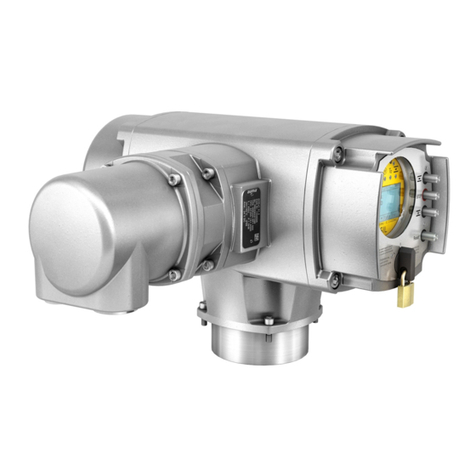
AUMA
AUMA AC 01.2 User manual
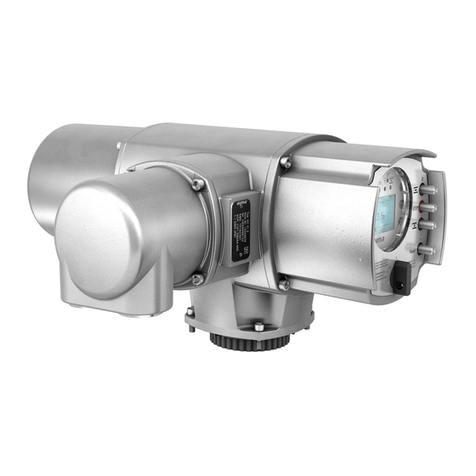
AUMA
AUMA Aumatic AC 01.1 User manual
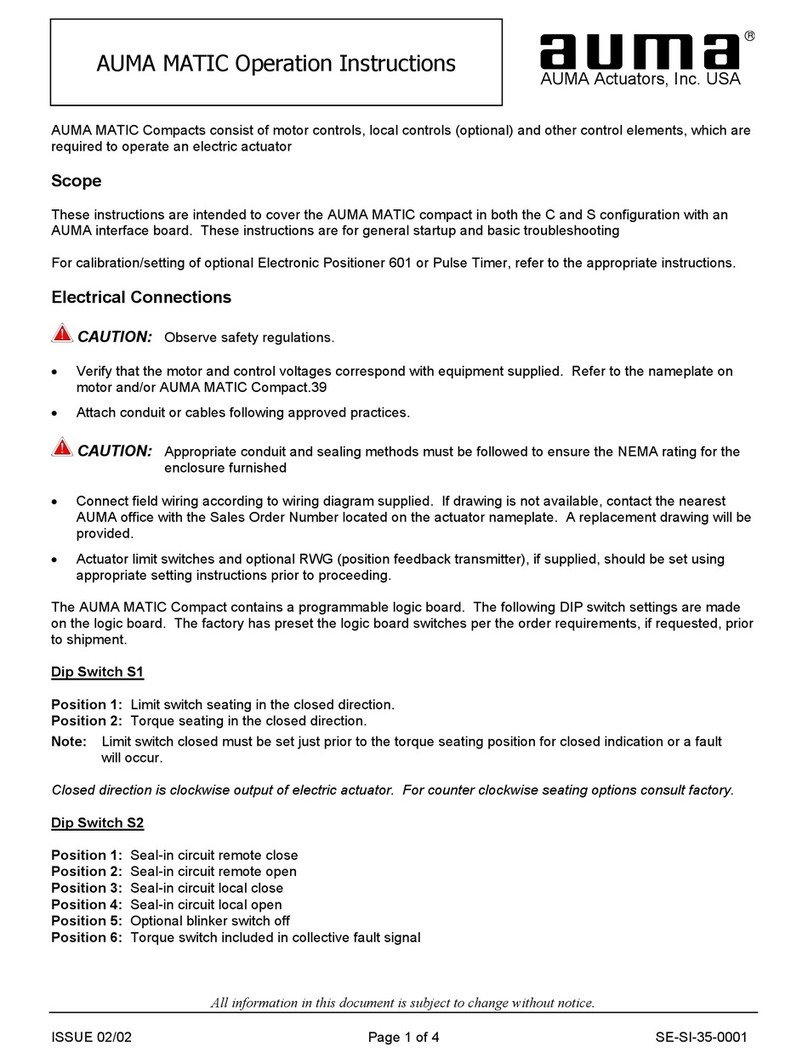
AUMA
AUMA Matic User manual

AUMA
AUMA Aumatic AC 01.1 User manual
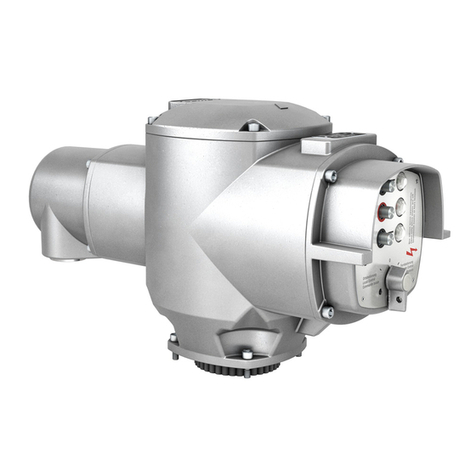
AUMA
AUMA AM 01.1 User manual
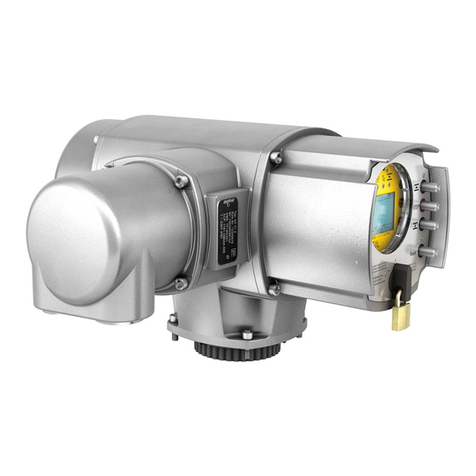
AUMA
AUMA AUMATIC AC 01.2 User manual

AUMA
AUMA Aumatic AC 01.1 Manual

AUMA
AUMA AC 01.2 User manual
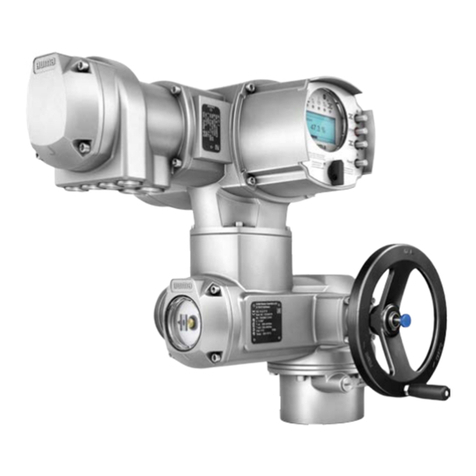
AUMA
AUMA SQ 05.2 User manual
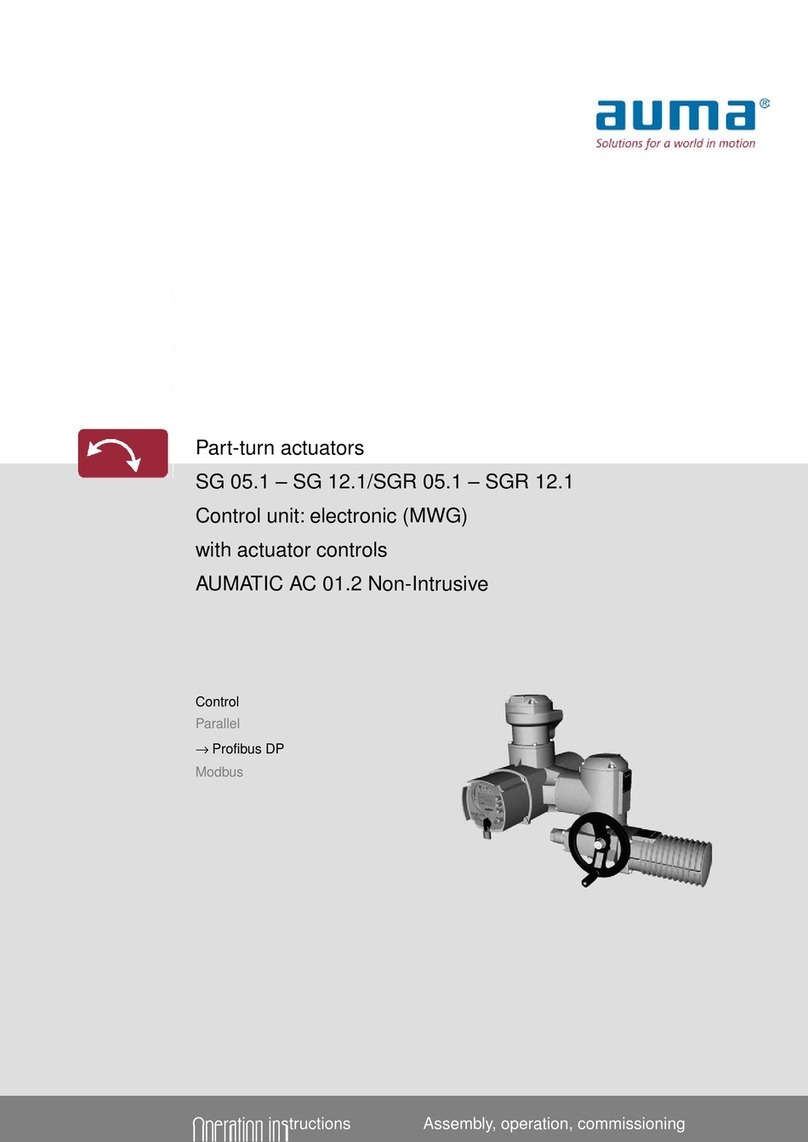
AUMA
AUMA SG 12.1 User manual
Popular Control Unit manuals by other brands

SSS Siedle
SSS Siedle BSG 650-02 manual
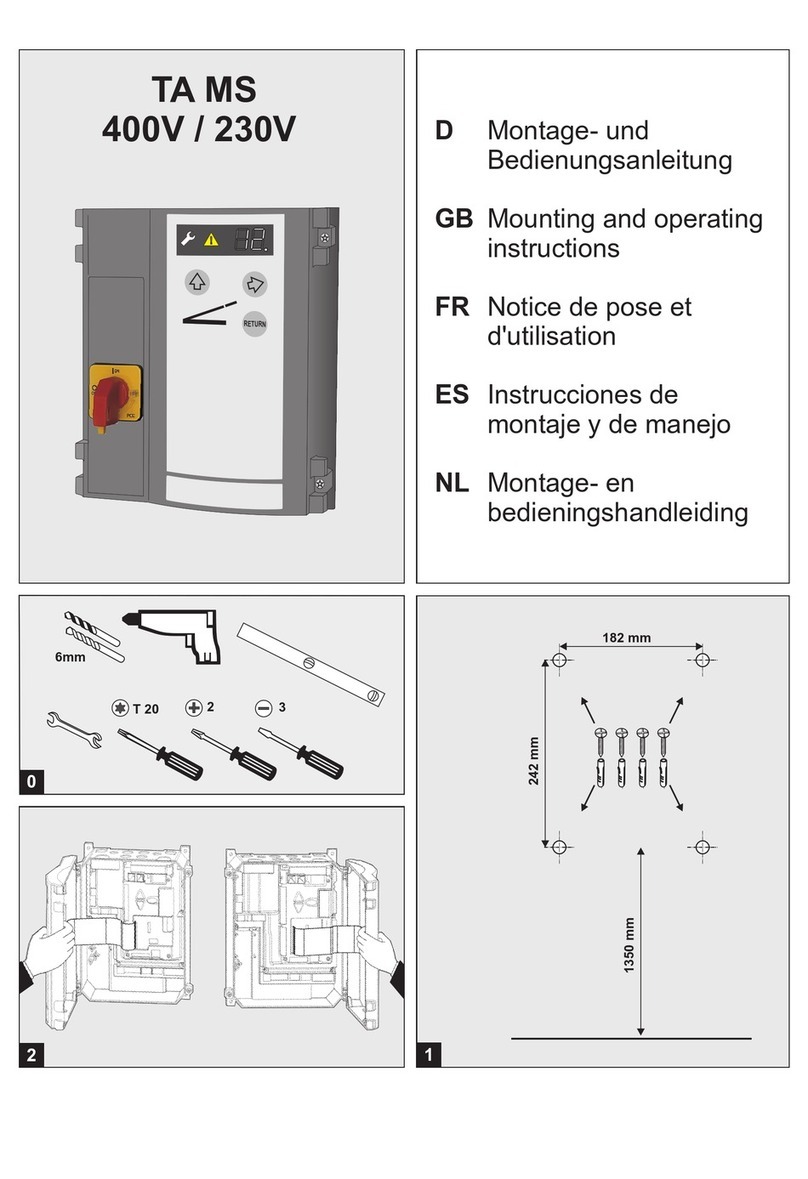
Novoferm
Novoferm TA MS 400V / 230V Mounting and operating instructions

ABB
ABB ACS880 Series Supplement
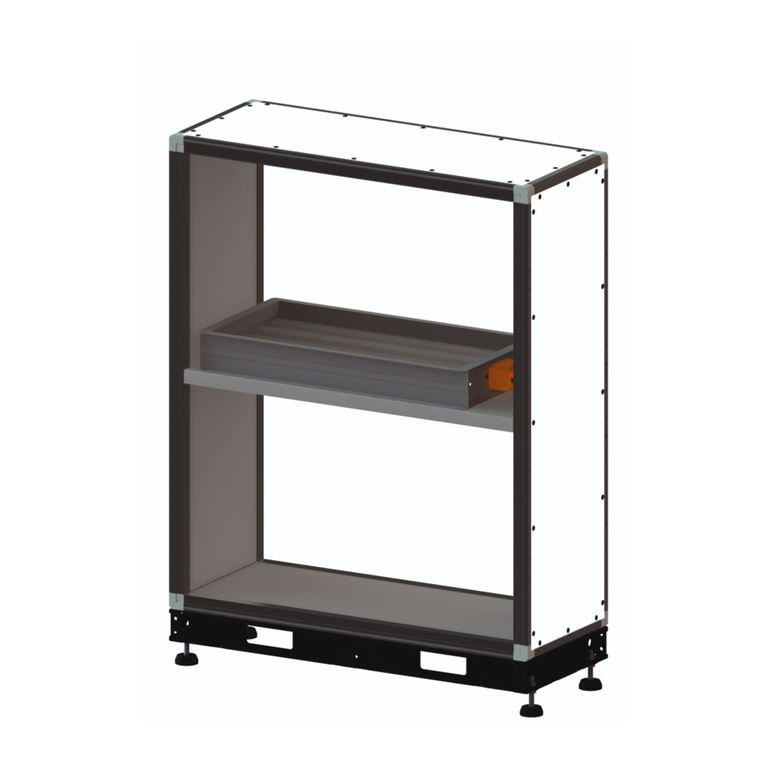
Helios
Helios AIR1-ULM Installation and operating instructions

Digital Systems
Digital Systems TYTAN DS459 installation manual
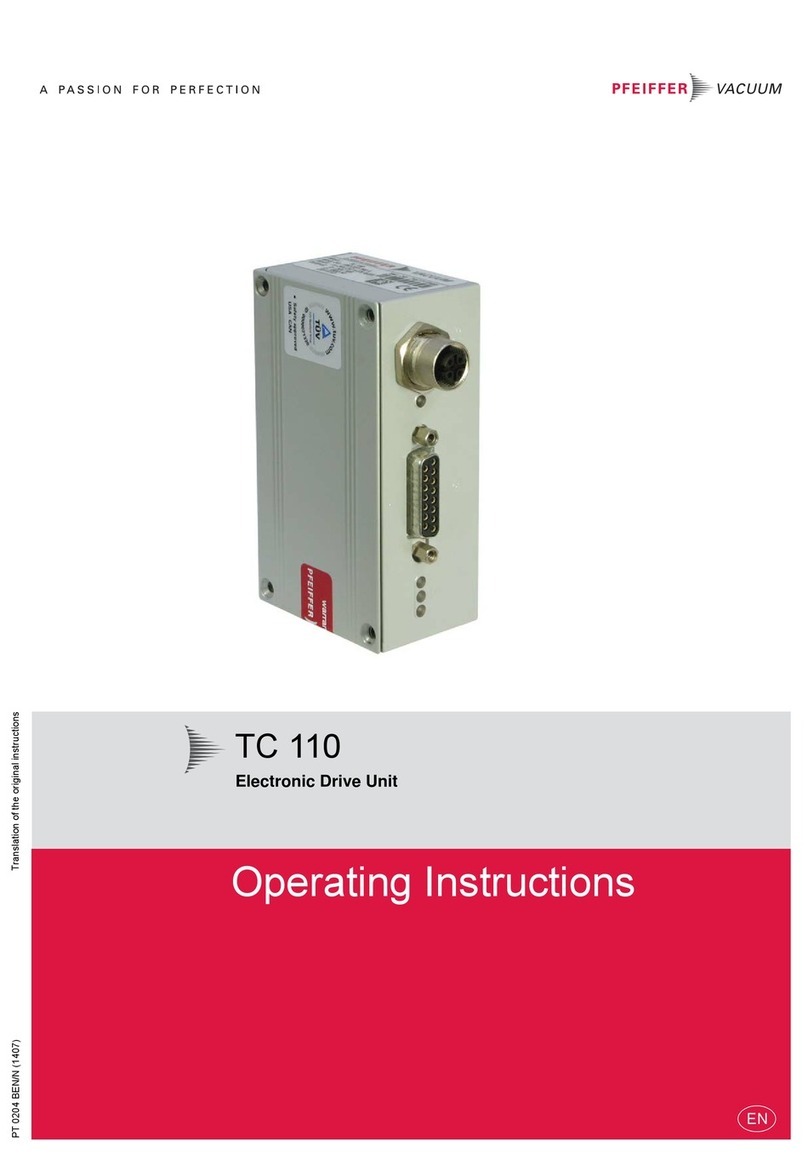
Pfeifer Vacuum
Pfeifer Vacuum wrn100 operating instructions



